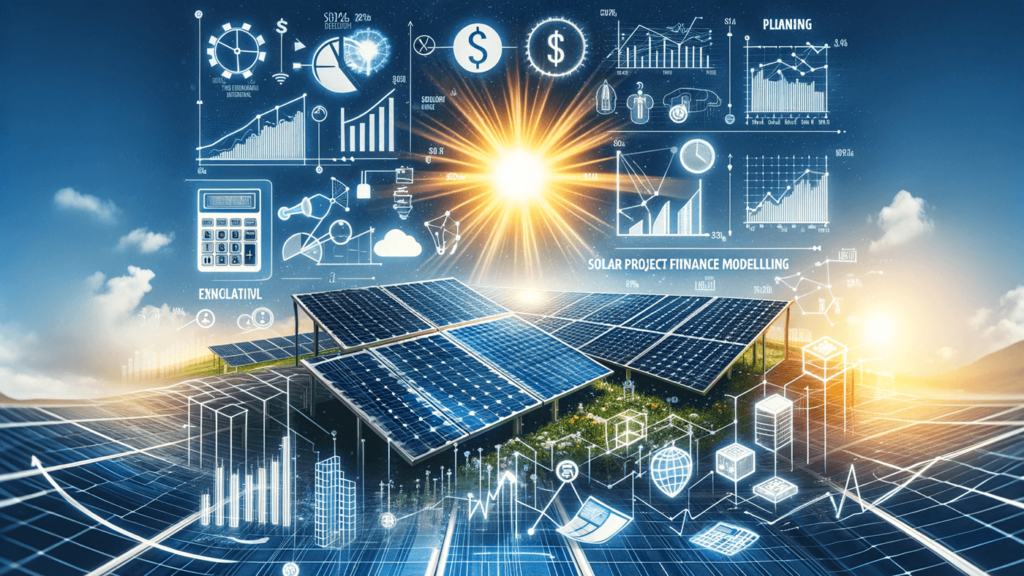What is a Solar Energy Project?
A solar energy project involves designing, planning, and installing solar power systems to convert sunlight into electricity. The core of such projects is the photovoltaic (PV) cells, which capture sunlight and generate direct current (DC) electricity. This is then converted to alternating current (AC) by inverters for household or industrial use.
Solar energy projects can be applied on various scales, ranging from small, residential rooftop systems to large solar farms that provide power to entire communities or industries. The primary goal is to reduce reliance on non-renewable energy sources like coal and natural gas while leveraging clean, abundant solar energy.
These projects can be integrated into hybrid systems, which combine solar with other renewable sources like wind or hydropower to ensure a stable and continuous energy supply.
Benefits of Solar Energy Projects
Solar energy projects offer numerous benefits, making them an appealing option for both businesses and homeowners.
Key Benefits Include:
- Sustainability: Solar energy is renewable, meaning it won’t run out like fossil fuels. Solar power projects help reduce carbon emissions, contributing to a cleaner environment.
- Cost Savings: Once installed, solar panels significantly reduce electricity bills. Many countries offer incentives, rebates, and tax breaks to encourage solar energy adoption, further lowering costs.
- Energy Independence: Solar energy projects promote energy independence, as they allow individuals and businesses to generate their own electricity without relying solely on the grid.
- Low Maintenance: Solar panels have no moving parts and require minimal maintenance, making them highly reliable and long-lasting.
- Job Creation: Solar energy projects support job growth in the renewable energy sector, particularly in manufacturing, installation, and maintenance.
- Scalability: Solar energy systems can be tailored to different needs, whether it’s a small home installation or a large commercial solar farm.
Types of Solar Energy Projects
There are several types of solar energy projects, each suited to different applications and environments:
- Residential Solar Projects: These involve installing solar panels on rooftops to power homes. Homeowners can reduce their electricity bills, and in some cases, sell excess power back to the grid. Residential solar projects typically use photovoltaic (PV) panels to convert sunlight into electricity for household use.
- Commercial Solar Projects: These are larger in scale and are designed for businesses, warehouses, or large commercial properties. Solar energy can power lighting, HVAC systems, and equipment, resulting in significant energy savings.
- Utility-Scale Solar Farms: These massive installations cover large areas and generate power for entire communities. Utility companies may operate solar farms, feeding clean electricity into the grid to supply thousands of homes and businesses.
- Solar Power Plants: In addition to PV panels, solar power plants may use concentrated solar power (CSP) technology. CSP systems use mirrors or lenses to concentrate sunlight onto a receiver, generating heat that is then used to produce electricity through a turbine.
- Hybrid Solar Projects: These systems combine solar energy with other renewable energy sources like wind or battery storage to ensure a reliable energy supply, even when sunlight is not available.
Key Considerations for Solar Energy Projects
When planning and executing a solar energy project, several factors need to be considered:
- Location: The amount of sunlight a region receives is a critical factor. Areas with consistent sunlight exposure, like deserts or coastal regions, are ideal for solar projects.
- System Size and Capacity: Determining the size of the system needed based on energy consumption is essential for efficient project planning.
- Budget and Financing: Solar projects require an upfront investment, although long-term savings on energy bills can offset these costs. Financial incentives, loans, and subsidies are available to make solar projects more affordable.
- Permitting and Regulations: Local regulations, building codes, and zoning laws must be adhered to when installing solar systems, especially for larger projects.
- Maintenance and Monitoring: Regular monitoring and occasional cleaning are required to ensure the system operates at peak efficiency.
The Future of Solar Energy Projects
Solar energy projects are advancing rapidly, with improvements in technology making solar panels more efficient and affordable. Innovations such as floating solar farms, solar tracking systems, and solar storage solutions are transforming the way solar energy is harnessed. Governments worldwide are investing heavily in solar infrastructure to meet renewable energy goals, further driving the expansion of solar energy projects. As solar technology continues to evolve, its role in reducing global carbon emissions and combating climate change becomes increasingly vital. Solar energy projects are poised to play a crucial part in the transition to a sustainable energy future.
Conclusion
Solar energy projects are a key component of the renewable energy revolution, providing clean, sustainable, and cost-effective power. Whether for residential use, commercial operations, or large-scale utility projects, solar energy is shaping a greener, more sustainable future. As more advancements are made in solar technology, the efficiency, affordability, and accessibility of solar energy will continue to improve, making it an attractive option for powering our world. Investing in solar energy projects not only benefits the environment but also offers long-term financial savings and energy security.



